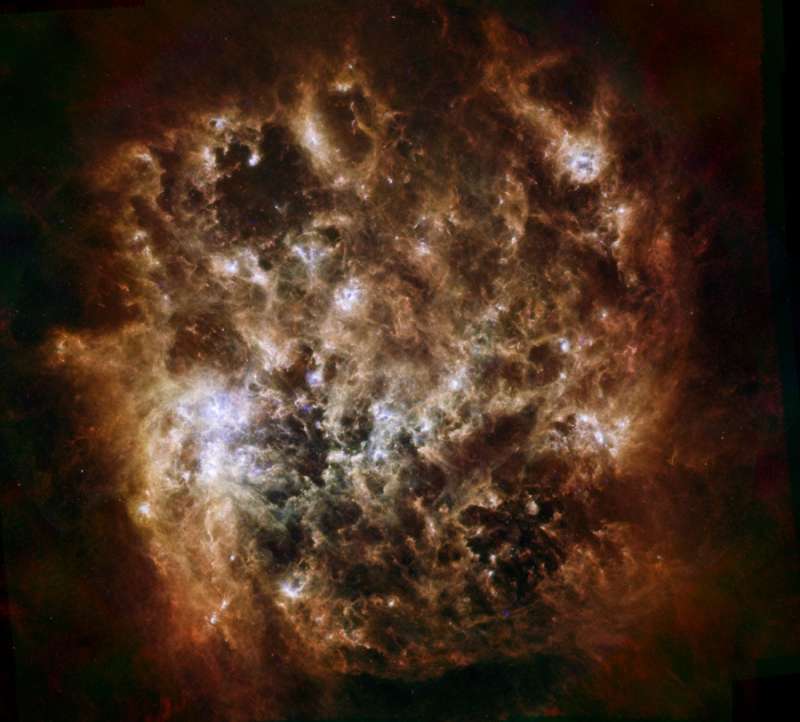Infrared Portrait of the Large Magellanic Cloud

Explanation:
Cosmic dust clouds ripple across
this infrared portrait
of our Milky Way's
satellite
galaxy, the Large Magellanic Cloud.
In fact, the remarkable composite image from the
Herschel
Space Observatory and the
Spitzer Space
Telescope
show that dust clouds fill this neighboring dwarf galaxy, much like
dust along the plane of the Milky Way
itself.
The dust
temperatures
tend to trace star forming activity.
Spitzer data in blue hues indicate warm dust heated
by young stars.
Herschel's instruments contributed the image data shown in red and
green, revealing dust emission from cooler and intermediate regions
where star formation is just beginning or has stopped.
Dominated by dust emission, the Large Magellanic Cloud's
infrared appearance is different
from
views in optical images.
But this galaxy's well-known
Tarantula Nebula still stands out,
easily seen here as the brightest region to the left of center.
A mere 160,000 light-years distant,
the Large Cloud of Magellan
is about 30,000 light-years across.
Authors & editors:
Robert Nemiroff
(MTU) &
Jerry Bonnell
(USRA)
NASA Web Site Statements, Warnings,
and Disclaimers
NASA Official: Jay Norris.
Specific
rights apply.
A service of:
LHEA at
NASA /
GSFC
& Michigan Tech. U.

